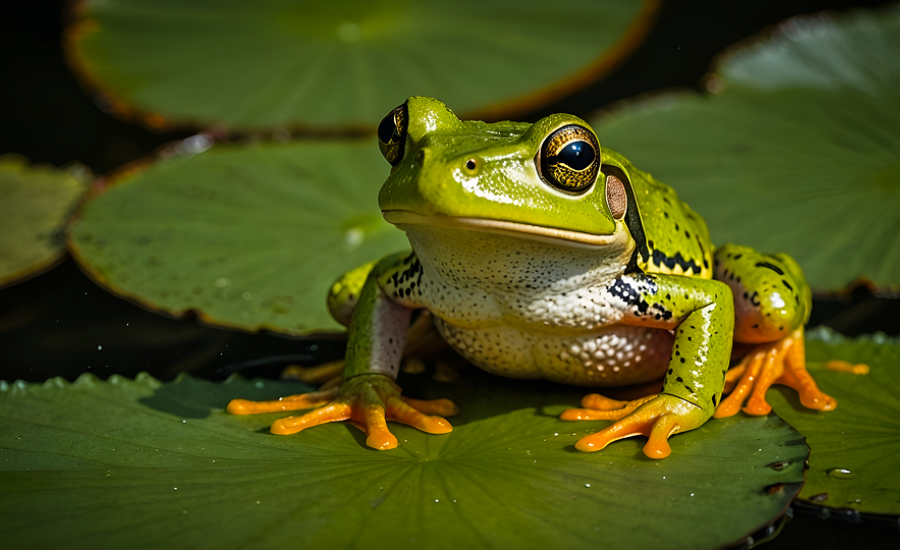Everything You Need to Know About the Cute:7ziqkivryto= Frog
The Cute:7ziqkivryto= Frog is a fascinating amphibian that has captivated scientists and nature lovers alike due to its striking appearance, unique behaviors, and ecological significance. Below is a detailed exploration of this remarkable species, covering everything from its vibrant looks to its cultural symbolism.
1. Vibrant Appearance and Unique Features
One of the standout characteristics of the Cute:7ziqkivryto= Frog is its vivid coloration, often featuring shades of greens, yellows, and sometimes blue. These bright colors act as aposematic signals, warning predators of the frog’s toxicity. This adaptation not only ensures its survival in the wild but also makes it a visual marvel among amphibians.
In addition to its colors, the frog has large, expressive eyes which not only enhance its “cute” appearance but are also crucial for survival. These eyes give the frog excellent vision, especially during the night when it is most active, allowing it to detect prey and evade predators with ease.
2. Natural Habitat and Distribution
The Cute:7ziqkivryto= Frog is predominantly found in the tropical rainforests of South America. It thrives in warm, humid environments where moisture and vegetation are abundant. These frogs often live near water sources such as rivers and ponds, as water is essential for their hydration and breeding cycles.
The frog’s adaptability to various levels of the rainforest—from the leaf litter on the forest floor to the treetop canopies—demonstrates its ecological flexibility. The tropical ecosystem is not only a source of food but also serves as a shelter and breeding ground, where the frog can lay eggs in protected, moist environments.
3. Nocturnal Behavior
A key survival strategy for the Cute:7ziqkivryto= Frog is its nocturnal lifestyle. By being active at night, it avoids many predators that are less active in the dark. The cooler temperatures and higher humidity levels of the nighttime also help maintain the frog’s delicate skin moisture, essential for its respiratory system.
The frog uses its long, sticky tongue to catch small insects and invertebrates, like beetles and ants, which make up its diet. Combined with its sharp vision and acute hearing, the Cute:7ziqkivryto= Frog is a skilled nocturnal hunter.
4. Reproduction and Life Cycle
During the breeding season, male frogs become highly vocal, using calls to attract females. Once a pair mates, the female lays eggs near or directly in water. These eggs hatch into aquatic tadpoles, which then undergo a remarkable transformation called metamorphosis, eventually becoming terrestrial juvenile frogs.
The reproductive process is delicate and depends heavily on a moist environment to ensure the survival of the eggs and tadpoles. This underscores the importance of preserving the frog’s natural habitat for the continuation of the species.
5. Ecological Role
The Cute:7ziqkivryto= Frog plays an essential role in maintaining its ecosystem. As a predator of insects and small invertebrates, it helps regulate populations that might otherwise grow uncontrollably, thus contributing to the ecological balance. Additionally, it serves as prey for larger animals, making it a vital part of the food web.
The frog’s presence in an ecosystem is also an indicator of environmental health, as amphibians are highly sensitive to changes in water quality, air, and climate.
6. Cultural Significance
Beyond its ecological importance, the Cute:7ziqkivryto= Frog holds symbolic value in various cultures, particularly among indigenous communities. In these cultures, the frog is often seen as a symbol of transformation and renewal, much like its life cycle that transitions from aquatic tadpole to terrestrial adult. Its vivid colors and adaptability also make it a popular subject in folklore, art, and mythology.
7. Threats and Conservation
Despite its adaptability, the Cute:7ziqkivryto= Frog faces several threats in its natural habitat. Deforestation, pollution, and climate change are the primary dangers that lead to habitat loss and population decline. Agricultural runoff can introduce harmful chemicals into the frog’s ecosystem, while rising global temperatures affect its humid environment.
Conservation efforts are underway to protect the frog’s habitat, with organizations focusing on rainforest preservation, education, and sustainable practices. By raising awareness about the importance of this species, researchers hope to secure the frog’s future in the wild.
Conclusion
The Cute:7ziqkivryto= Frog is a remarkable example of nature’s complexity and beauty. From its vibrant coloration and nocturnal habits to its crucial role in the ecosystem, this species highlights the delicate balance of rainforest environments. Protecting the Cute:7ziqkivryto= Frog ensures not only the survival of a captivating amphibian but also the health of entire ecosystems. Through continued conservation efforts, we can safeguard this species for generations to come.
By understanding the Cute:7ziqkivryto= Frog’s biology, habitat, and the threats it faces, we gain a deeper appreciation for the rich biodiversity of our planet and the need to protect it.

